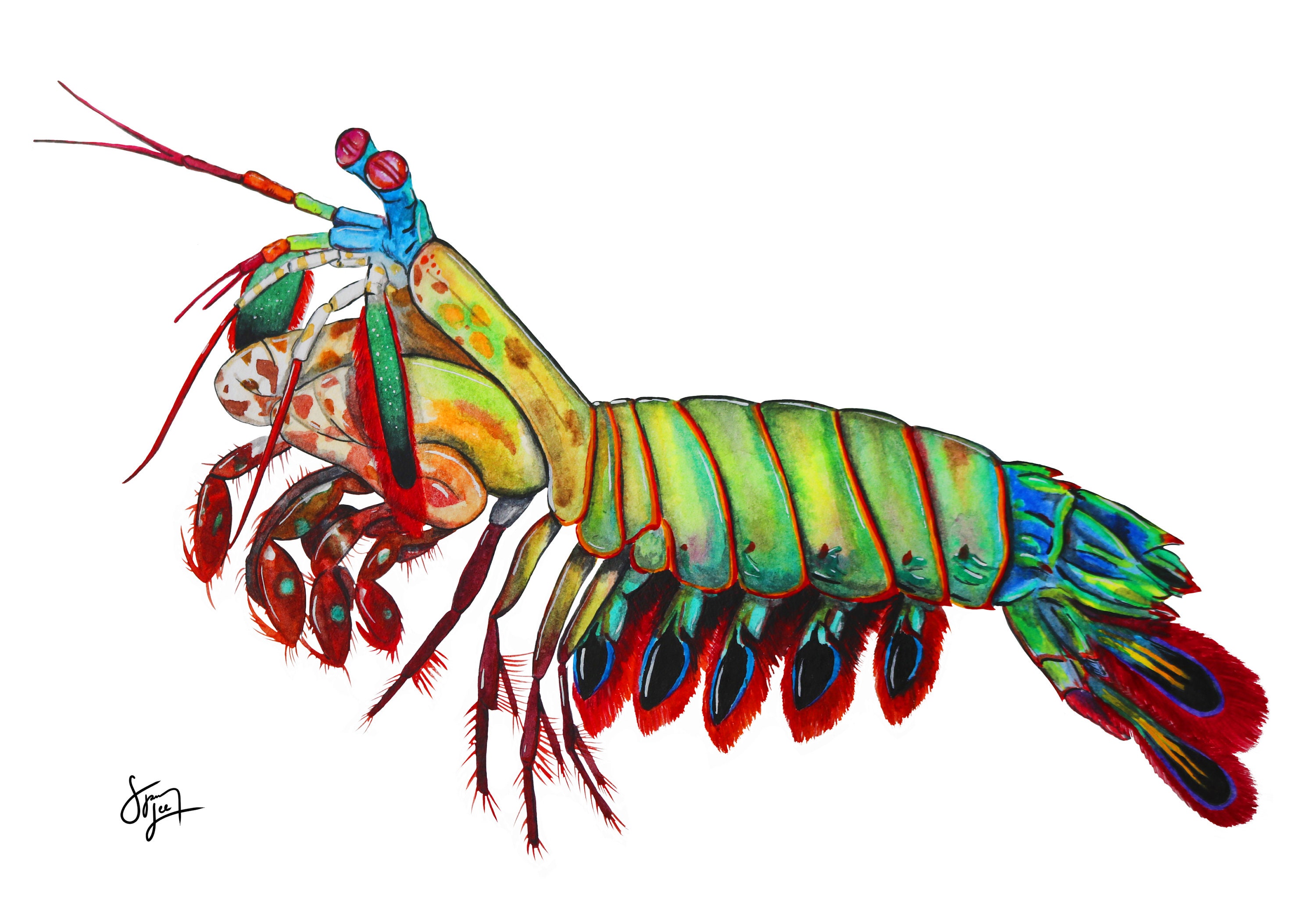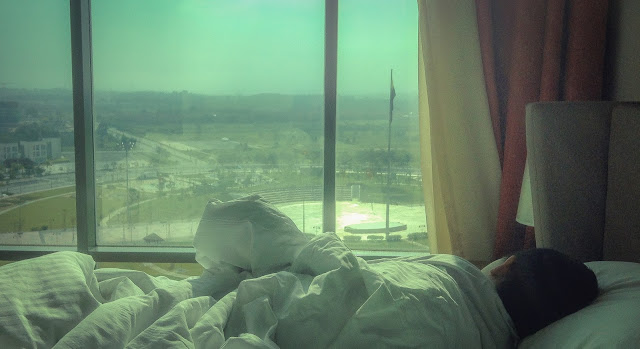I thought I'd reserved a seaview room?
There was a small, secluded resort on a tropical island known as Andalusian Shoals. Its brochures promised nothing unusual: calm seas, pale beaches, and air so clean you could hear your own thoughts hum. Yet, visitors who stayed there often left with the same strange impression, that something wasn’t quite right about how the rooms were assigned.
At Andalusian Shoals, one did not simply book a seaside room. You could try, of course. You could click the option online and pay the premium. But when you arrived, dragging your suitcase through the jasmine-scented lobby, the receptionist would look first not at your name, not at your reservation, but at your luggage.

If your luggage was green, the clerk’s expression would soften instantly. ‘Ah! Right this way, sir, ma’am,' they’d say, and before long you’d be ushered to a suite with salt-streaked windows and a horizon like liquid glass. No extra charge, no questions asked.
If your luggage was yellow, the clerk’s eyes would flicker with a kind of polite regret. ‘I’m terribly sorry,' they’d say, ‘but all seaside rooms are currently occupied. Would you like to upgrade?' The surcharge was steep, rumored to be triple the standard rate, and even then, there was no guarantee. Sometimes you would find yourself paying a small fortune only to stare out at the parking lot, where the palms trembled in the exhaust heat.
People began to whisper theories in the dining hall. Some said the owner, a retired chromotherapist, believed that colors carried spiritual charge, that green symbolized calmness and compatibility with ocean energy. Others insisted it was a leftover superstition from the island’s old inhabitants: that the spirits of the sea favored travelers who carried the color of algae and coral moss.

A man once tested the system. He brought two suitcases, one green, one yellow. He placed the green one on the counter first and was promptly led to the seaside suite. Later, he called the front desk, complaining that his other bag (the yellow one) had been misplaced. When the staff arrived to retrieve it, they looked at the color, frowned faintly, and insisted, “This bag should not be in this room.” They carried it away with the sort of care reserved for unexploded ordnance.
Even stranger were the reports that some guests who had not paid at all, friends of the staff, or mistaken walk-ins, were still escorted to the best rooms, simply because their luggage happened to be green. One woman swore she’d heard the manager say, ‘Payment follows color, not the other way around.' No one knew what it meant.
By the time guests checked out, the ocean view felt less like a privilege and more like a quiet test one had accidentally passed. Some began painting their suitcases before arrival; others bought green covers at the airport gift shop. But those who did so noticed that the staff seemed to know. Their smiles stiffened. Their voices grew too polite. And those guests were never given the seaside rooms.
In the end, guests at Andalusian Shoals come for the beach, stay for the confusion, and leave with an important lesson: In a world obsessed with fairness, sometimes it’s better to just buy a green suitcase and shut up. Because at Andalusian Shoals, money doesn’t talk, green luggage does. And it speaks fluent nonsense.
- This story was inspired by a dialogue in Reiko Sawane et al. (2024) Japanese for Busy People Book III, 4th edition, Kodasha, New York.

See Lesson 13: I thought I'd reserved a sideside room:海側 の部屋 を予約 したはずだったんですが、チェックインしたら山側 の部屋 だったんです . . .綺麗 な海 の景色 が有名 なリゾートなのに、窓 から山 しか見 えなかったんです。本当 に落胆 しました . . . (pp. 148 - 149)
- For instance, see Oguri Mushitarō (1934) The Kokushikan Murder Case 小栗虫太郎・黒死館殺人事件: 旗太郎にも、同様
落胆 したらしい素振 が現 われたけれども、さすがに年少 の彼 は、すぐに両手 を大 きく拡 げて喜悦 の色 を燃 やせた。
- In the Old World, evolution took a rather ingenious shortcut to expand color perception. Instead of inventing a new visual gene from scratch, it simply duplicated an existing one.
The original photopigment gene, located on the X chromosome, was copied and pasted a few loci away from its source. Over time, this duplicate version was fine-tuned to respond more strongly to light of medium wavelengths. The result was that both the green and yellow/red opsin genes ended up residing side by side on the same X chromosome. These genes encode the proteins responsible for detecting color, known as cone opsins, each tuned to a specific range of wavelengths:
- S-opsin (short wavelength, about 420 nm) — sensitive to blue luggage, encoded on chromosome 7q31.3–q32,
- M-opsin (medium wavelength, about 530 nm) — sensitive to green luggage, encoded on chromosome Xq28,
- L-opsin (long wavelength, about 560 nm) — sensitive to yellow luggage and red luggage, also encoded on Xq28.
The M-opsin and L-opsin genes sit adjacent to one another on Xq28, and their DNA sequences are astonishingly similar, about 96% identical. This subtle genetic refinement granted Old World primates, including humans, the gift of true trichromatic color vision.
- When asked whether the policy was discriminatory, the general manager, Mr. Orin Vale, replied, ‘Not at all. Anyone can buy green luggage.' Which, when you think about it, is exactly how privilege works.
In another interview, Mr. Vale was heard saying, ‘Yellow disrupts the sea’s frequency.'
He said this without irony while standing in front of a wall of motivational posters that read ‘Diversity in Hue Is Unity in View.' No one knows what that means, but he said it while holding a clipboard, so it sounded legitimate.
- Technically, paying guests whose luggage failed to active the medium-wavelength opsin were largely overlooked.
Their rooms were assigned at random, mountain view (if you are lucky), parking lot view, janitor’s closet, etc, depending on how apologetic they looked. To upgrade, they must pay a mysterious surcharge, which the resort describes as a vibrational recalibration fee. That means they’re charged extra for being happy, which feels very on-brand for hospitality. A group of minimalist travelers who brought no luggage at all were nearly denied entry. Andalusian Shoals had no category for ‘absence of color.' They were eventually classified as ‘transparent tier' and placed in a windowless room ‘to avoid reflection issues.'

- If the owner of Andalusian Shoals were a mantis shrimp, the whole concept of ‘guest experience' would shift into a kaleidoscope of alien logic. With up to 16 types of photoreceptors, the mantis shrimp owner could literally see every nuance of color in every guest’s luggage. Guests carrying slightly wrong hues would be immediately reclassified. Rooms are no longer yamagawa or umigawa, they are assigned according to how the guest’s spectral signature complements the room’s ambient color spectrum. Mismatched wavelengths could result in being put in the UV (reflective closet or the polarization) optimized penthouse, depending on which cone receptor ‘rejoices' most.




Comments